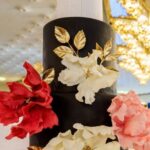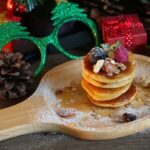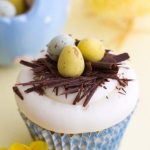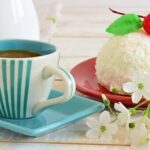Are you looking to elevate your cake decorating skills? Learn how to make decorative frosting for cakes with simple techniques and tools. Decorative frosting adds that extra touch of creativity and flair to any baked creation, making it visually appealing and delicious. Whether you’re a beginner or an experienced baker, mastering the art of decorative frosting can take your cakes to the next level.
Decorative frosting is not just about spreading a layer of icing on top of a cake – it involves intricate designs, colors, and textures that can transform a simple dessert into a work of art. By learning the basics of making decorative frosting, you can create stunning creations that will impress your friends and family. With the right tools and ingredients, along with some practice and creativity, you can achieve professional-looking results from the comfort of your own kitchen.
In this guide, we will walk you through the step-by-step process of making decorative frosting for cakes. From choosing the right type of frosting to exploring various decorating techniques, we will provide you with all the information you need to create beautiful and delicious desserts. So get ready to unleash your inner artist and learn how to make decorative frosting that will take your cakes from ordinary to extraordinary in no time.
Tools and Ingredients Needed for Making Decorative Frosting
Decorative frosting is an essential element when it comes to creating beautifully decorated cakes. To make the perfect decorative frosting for your cakes, you’ll need the right tools and ingredients. Here’s a list of essentials that will help you achieve professional-looking results:
Tools
One of the key tools you will need for making decorative frosting is a good quality mixer. Whether it’s a stand mixer or a hand mixer, having one will make the process much easier. Other tools include piping bags and various tips for different designs, offset spatulas for spreading frosting evenly, and a turntable to easily rotate and decorate your cake.
Ingredients
The ingredients needed for making decorative frosting can vary depending on the type of frosting you choose to make. Common ingredients include butter, powdered sugar, vanilla extract, heavy cream or milk, and food coloring if you want to add some color to your frosting. Knowing the right proportions of these ingredients is crucial in achieving the desired consistency and flavor.
Tips
When it comes to choosing ingredients for your decorative frosting, opt for high-quality products as they can greatly impact the taste and appearance of your final product. Additionally, make sure all your tools are clean and dry before using them to prevent any contamination in your frosting. Lastly, always follow a trusted recipe and don’t be afraid to experiment with different flavors and colors to create unique designs on your cakes.
With the right tools and ingredients at hand, you are well-equipped to start making decorative frosting for cakes. Now that you know what is required, let’s move on to the next section where we’ll delve into choosing the right frosting for your cake.
Choosing the Right Frosting for Your Cake
When it comes to choosing the right frosting for your cake, there are several factors to consider that can greatly impact the final result of your decorative creation. One of the key considerations is the flavor profile you want to achieve. Buttercream frosting is a popular choice for its creamy texture and versatility in flavoring with extracts, fruits, or chocolate.
If you prefer a lighter and fluffier option, whipped cream frosting can be a great alternative. For those looking for a more stable option that holds its shape well for intricate designs, royal icing is a favorite among professional bakers.
Another important factor to consider when choosing the right frosting for your cake is the climate and temperature conditions in which you will be serving your dessert. In hot and humid environments, buttercream frosting may melt quickly, so opting for a more stable option like fondant or ganache could be more suitable.
Additionally, the type of cake you are decorating can also influence your choice of frosting. Lighter cakes like angel food cake may benefit from a light whipped cream topping, while denser cakes like chocolate fudge cake pair well with rich ganache.
Experimenting with different types of frostings can help you discover which one works best for your preferred decorating style and taste preferences. With practice and patience, you can master the art of creating beautifully decorated cakes using various types of frostings that cater to different occasions and themes.
Whether it’s a classic buttercream swirl or an elaborate royal icing design, choosing the right frosting is just the first step in creating stunning edible works of art that will impress your friends and family.
Step-by-Step Instructions for Making Decorative Frosting
Decorative frosting can elevate the look of your cakes and desserts, making them not only delicious but also visually appealing. Whether you are a beginner or an experienced baker, knowing how to make decorative frosting for cakes is a skill that can take your confectionery creations to the next level. By following these step-by-step instructions, you can learn the art of creating beautiful and intricate frosting designs.
To start making decorative frosting for your cakes, you will need a few essential tools and ingredients. Here is a list to get you started:
- Stand mixer or hand mixer
- Bowl for mixing
- Spatula
- Piping bags
- Piping tips (various sizes and shapes)
- Gel food coloring
- Frosting (buttercream, royal icing, fondant)
Once you have gathered all the necessary tools and ingredients, it’s time to choose the right type of frosting for your cake. Buttercream frosting is versatile and easy to work with, while royal icing is perfect for intricate piping designs. Fondant can be used for smoother finishes on cakes. Depending on your desired outcome, selecting the appropriate frosting is crucial in achieving the best decorative results.
Now that you have everything prepared, let’s dive into how to make decorative frosting for cakes. Follow these simple steps:
- Prepare your chosen frosting recipe according to instructions.
- If using buttercream or royal icing, divide the frosting into separate bowls for coloring.
- Add gel food coloring in small increments until you reach the desired shade.
- Transfer each colored frosting into individual piping bags fitted with different tips.
- Experiment with different piping techniques such as rosettes, swirls, dots, and lines to create unique designs on your cake.
By following these step-by-step instructions and practicing various decorating techniques, you will soon master the art of making decorative frosting for cakes. Let your creativity flow as you experiment with different colors and patterns to create stunning edible works of art that will impress any guest or recipient at your next celebration.
Different Techniques for Decorating Cakes With Frosting
Decorating cakes with frosting is both a fun and rewarding process. There are numerous techniques you can use to create beautiful and unique designs on your cakes. Whether you’re a beginner or more experienced in cake decorating, experimenting with different frosting techniques can take your creations to the next level. Here are some popular techniques to consider:
- Piping: Piping is one of the most common techniques used in cake decorating. Using a piping bag and various tips, you can create intricate designs such as borders, flowers, swirls, and lettering. Practice different pressure levels and nozzle sizes to achieve different effects.
- Spatula Painting: This technique involves using an offset spatula or palette knife to create textured designs on your cake. Simply apply a thin layer of frosting onto the cake and use the spatula to create patterns or swirls. You can also blend different colors together for a watercolor effect.
- Stencil Work: Stenciling is a great way to add intricate designs to your cake without needing advanced piping skills. Simply place a stencil over the cake and use an offset spatula or icing smoother to spread frosting over the stencil openings. Carefully remove the stencil to reveal the design.
Tips for Achieving Professional-Looking Decorative Frosting
Achieving professional-looking decorative frosting on cakes may seem daunting, but with practice and the right techniques, you can elevate your creations to bakery-quality standards. Here are some tips to help you achieve that polished finish:
- Smooth Frosting Surface: To ensure a smooth surface for decorating, start by crumb coating your cake with a thin layer of frosting before adding the final coat.
- Consistent Piping Pressure: When using piping bags, maintain consistent pressure for even lines and shapes. Practice different pressure levels on parchment paper before moving onto your actual cake.
- Chill Between Layers: If you’re adding multiple layers of frosting or working with intricate designs, chill your cake in between layers to prevent smudging or melting of previous decorations.
Remember that each technique requires practice and patience, so don’t be discouraged if your first attempts aren’t perfect. With time and dedication, you’ll be able to master the art of making decorative frosting for cakes effortlessly.
Tips and Tricks for Achieving Professional-Looking Decorative Frosting
Decorative frosting can take your cake to the next level, making it not only delicious but also visually stunning. To ensure that your frosting looks as professional as possible, there are some tips and tricks you can follow. One important tip is to make sure that your frosting is the right consistency.
If it’s too thin, it won’t hold its shape when piped onto the cake, and if it’s too thick, it will be difficult to work with. To achieve the perfect consistency, you may need to adjust the amount of liquid or powdered sugar in your frosting recipe.
Another key aspect in achieving professional-looking decorative frosting is using the right tools. Invest in a good set of piping bags and tips to create different designs and patterns on your cakes. Practice with different tips to see which ones work best for the design you have in mind. Additionally, having a turntable can make it easier to evenly frost and decorate your cake from all angles.
When it comes to coloring your frosting, remember that less is more. Start with small amounts of food coloring and gradually add more until you reach the desired shade. It’s easier to add more color than to try to lighten an overly dark shade.
Also, consider using gel food coloring instead of liquid food coloring for more vibrant colors without altering the consistency of your frosting. With these tips and tricks in mind, you’ll be well on your way to creating beautifully decorated cakes using decorative frosting techniques for any occasion.
Common Mistakes to Avoid When Decorating With Frosting
When it comes to decorating cakes with frosting, there are some common mistakes that can easily be made if you’re not careful. One of the most common mistakes is using frosting that is too thick or too thin.
If your frosting is too thick, it will be difficult to spread evenly on the cake and may result in a messy-looking finish. On the other hand, if your frosting is too thin, it won’t hold its shape when piping decorations onto the cake.
Another mistake to avoid is not properly preparing your cake before applying the frosting. Make sure your cake is completely cooled before adding any frosting, as warm cakes can cause the frosting to melt and slide off. It’s also important to level your cake layers before stacking them and adding frosting in between. Uneven layers can result in a lopsided or unstable cake.
Lastly, be mindful of the temperature and humidity in the environment where you’re decorating your cake. Frosting can be affected by heat and humidity, so avoid working in a hot kitchen or under direct sunlight. If necessary, you can chill your frosted cake in the refrigerator for a few minutes to help set the frosting before adding additional decorations.
| Mistake | Impact |
|---|---|
| Thick Frosting | Difficult to spread evenly |
| Thin Frosting | Frosting won’t hold its shape |
| Not cooling cake | Frosting may melt and slide off |
Creative Ideas for Decorating Cakes With Decorative Frosting
Decorating cakes with decorative frosting offers endless possibilities for creativity and personalization. Once you have mastered the basics of making frosting and different techniques for applying it to a cake, you can start exploring more innovative ideas to elevate your creations. Here are some creative ideas for decorating cakes with decorative frosting:
Ombre Effect
Create a visually stunning ombre effect by incorporating different shades of the same color into your frosting. Start with a lighter shade at the top of the cake and gradually transition to a darker shade towards the bottom. Use a piping bag with multiple colors or simply blend different tones together for a seamless gradient effect.
Textured Designs
Experiment with various textures and patterns to add dimension to your cake decorations. You can use tools like combs, spatulas, or even toothpicks to create unique designs on the surface of the frosting. Try experimenting with ribbons, swirls, or even abstract shapes to give your cakes a modern and artistic touch.
Floral Accents
Incorporating edible flowers or creating floral designs with frosting can add an elegant and sophisticated touch to your cakes. Practice piping delicate petals, leaves, or blossoms onto your cake using different frosting tips to achieve intricate floral decorations. Whether you opt for a simple floral border or a full-on bouquet design, flowers are always a classic choice for cake adornments.
With these creative ideas in mind, you can take your cake decorating skills to the next level and impress your friends and family with beautifully decorated treats that are as delightful to look at as they are delicious to eat. Don’t be afraid to experiment with different techniques and designs until you find what works best for you and your unique style when it comes to decorating cakes with decorative frosting.
Conclusion
In conclusion, mastering the art of making decorative frosting for cakes is a delightful way to take your baking skills to the next level. By following the step-by-step instructions provided and experimenting with different techniques, you can create beautifully decorated cakes that are sure to impress your friends and family. Remember, practice makes perfect when it comes to decorating with frosting, so don’t be discouraged if your first attempts aren’t flawless.
Additionally, choosing the right frosting for your cake is crucial in achieving professional-looking results. Whether you opt for buttercream, royal icing, or fondant, each type of frosting has its own unique characteristics and uses. And don’t forget about the tools and ingredients needed for making decorative frosting – having the right equipment on hand will make the process much smoother and more enjoyable.
Lastly, don’t be afraid to get creative with your designs. From simple swirls and rosettes to intricate piping and fondant accents, there are endless possibilities for decorating cakes with decorative frosting. So go ahead and let your imagination run wild – with a little patience and practice, you’ll soon become a pro at creating stunning works of edible art that will be the talk of any celebration.
Frequently Asked Questions
What Frosting Is Best for Decorating Cakes?
The best frosting for decorating cakes is typically buttercream or royal icing. Buttercream is great for piping borders, flowers, and writing, while royal icing works well for intricate designs and details due to its hardening properties.
How to Make Fake Frosting at Home?
Making fake frosting at home can be achieved using a combination of shortening, corn syrup, powdered sugar, and vanilla extract. By adjusting the consistency with additional ingredients like cornstarch or water, you can mimic the look of real frosting without all the sugar.
How to Make a Cake Frosting at Home?
Making cake frosting at home involves combining softened butter, powdered sugar, vanilla extract, and milk to create a creamy and delicious topping for your baked goods. You can customize the flavor by adding extracts such as almond or lemon for a unique touch.

Welcome to my blog about home and family. This blog is a place where I will share my thoughts, ideas, and experiences related to these important topics. I am a stay-at-home mom with two young children. I hope you enjoy reading it! and may find some helpful tips and ideas that will make your home and family life even better!





